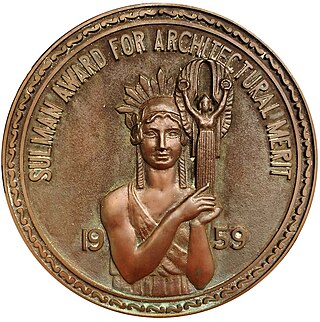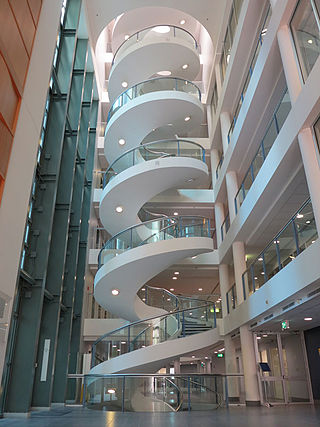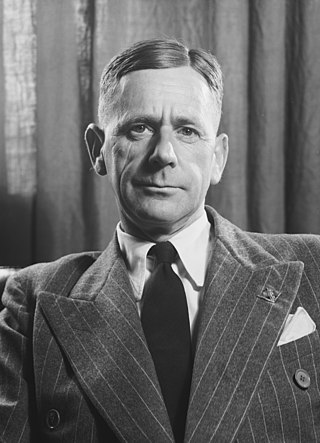The year 1979 in architecture involved some significant architectural events and new buildings.
Denton Corker Marshall is an international architecture practice based in Melbourne, Australia.

Glenn Marcus Murcutt is an Australian architect and winner of the 1992 Alvar Aalto Medal, the 2002 Pritzker Architecture Prize, the 2009 American Institute of Architects Gold Medal and the 2021 Praemium Imperiale. Glenn Murcutt works as a sole practitioner without staff, builds only within Australia and is known to be very selective with his projects. Being the only Australian winner of the prestigious Pritzker Prize, he is often referred to as Australia's most famous architect.
Nonda Katsalidis is a Greek-Australian architect. He is currently a practising director of architecture firm Fender Katsalidis Architects in partnership with Karl Fender.
Sir Roy Burman Grounds was an Australian architect. His early work included buildings influenced by the Moderne movement of the 1930s, and his later buildings of the 1950s and 1960s, such as the National Gallery of Victoria and the adjacent Victorian Arts Centre, cemented his legacy as a leader in Australian architecture.

Alexander Popov is an Australian architect working in the Late 20th Century Modern style.

Medal designer: George Rayner Hoff (1894-1937), sculptor and teacher. Famed for his sculptures in Sydney's Anzac Memorial.
The Gold Medal is the highest individual award of the Australian Institute of Architects, awarded annually since 1960. The award was created to recognise distinguished service by Australian architects who have:

Daryl Sanders Jackson is an Australian architect and the owner of an international architecture firm, Jackson Architecture. Jackson also became an associate professor at University of Melbourne and Deakin University.
The Sydney School of Architecture, Design and Planning, also known as The University of Sydney School of Architecture, Design and Planning, formerly the Faculty of Architecture, Design and Planning, is a constituent body of the University of Sydney, New South Wales, Australia. The school was established in 1920.

Michael John Strachan Bryce, was an Australian architect and graphic and industrial designer. He was the husband of the 25th governor-general of Australia, Dame Quentin Bryce.

Peter McIntyre is a Melbourne based Australian architect and educator.
Neil Clerehan was an Australian architect and architectural writer.

Kenneth Frank Charles Woolley, BArch, Hon DSc Arch Sydney LFRAIA, FTSE, was an Australian architect. In a career spanning 60 years, he is best known for his contributions to project housing with Pettit and Sevitt, four time Wilkinson Award-winning architect, including three times for his own house, the first being the 1962 Woolley House in Mosman, and his longstanding partnership with Sydney Ancher and Bryce Mortlock. He is regarded as being a prominent figure in the development of the Sydney School movement and Australian vernacular building.
Nicholas Phillip Murcutt was an Australian architect.

Woolley House is a heritage-listed residence located at 34 Bullecourt Avenue, Mosman, in the Mosman Council local government area of New South Wales, Australia. It was designed by Ken Woolley and built during 1962 by Pettit, Sevitt and Partners. It was added to the New South Wales State Heritage Register on 25 May 2001. The Woolley House is considered a classic example of the Sydney School style of architecture and was the recipient of the Australian Institute of Architects NSW Chapter Wilkinson Award in the year of its construction, the highest award for housing in New South Wales. In 2016 the house was bequeathed to the University of NSW. In 2022 the house was awarded the National Award for Enduring Architecture by the AIA.

Colin Arthur Still ARAIA, was an Australian architect from Watsons Bay, in Sydney. As part of his involvement with the Australian Institute of Architects he served as a Vice President and Chair of the Environment Committee. As a landscape artist he was a finalist in several Wynne Prize exhibitions at the Art Gallery of New South Wales.

Sydney Edward Cambrian Ancher ARAIA ARIBA, was an Australian architect from Woollahra, Sydney. His fascination with Europe contributed to the introduction of European internationalism in Australia. He also had a significant impact on the establishment of modern domestic architecture.

Leslie Wilkinson, FRAIA, was a UK-born Australian architect and academic. He was the founding dean of the faculty of architecture at University of Sydney in 1920 to 1947. A traditionalist, he is known for residential and church architecture.

Conrad Gargett was an Australian architecture and design practice founded in Brisbane in 1890, one of Queensland's earliest architectural firms. The practice operated out of studios in Brisbane, Sydney, Melbourne, Gold Coast, Townsville and Addis Ababa. In 2023, it merged with Australian architecture firm, Architectus.













